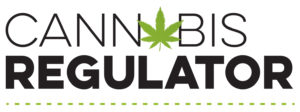A recent Gallup Poll cites that alcohol use is down 72% from a decade ago. The fact that more Gen Z consumers are choosing cannabis instead of alcohol has been cited as a potential factor for the decline.
The shift is taking place against the backdrop of increased crossover from mainline CPG/consumer brands into cannabis, including THC-infused beverages.
For example, Mary Jones, the cannabis brand from craft soda favorite Jones Soda, is seeing rapid success since its launch in California, with Washington, Nevada, Michigan and more cannabis legal states to come. Mary Jones was recently named Best Cannabis Soda by the High Spirits Award and has skyrocketed in popularity. It’s a favorite in modern and Gen Z party fridges and coolers.
“Not considering some of the negative health impacts from alcohol, cannabis can be a tool to aid folks in all aspects of their life,” David Grigsby, Brand Director of Emerging Brands of Jones Soda, says. “Cannabis has wellness benefits, athletic benefits, and we at Mary Jones promote the creative and social aspects of it. Cannabis is a way for consumers to recreate safely without the negative impacts that studies have shown come with alcohol.”
Cannabis Beverages Segment Growing Rapidly
Although cannabis beverages are one of the smallest segments in the industry, Grigsby says it is growing fast. It’s a popular consumption format for basically every consumer in the world. As manufacturing and emulsion techniques continue to improve, better products are getting added to the market, giving customers more options to choose from.
According to Dispensaries.com, the worldwide market for cannabis-infused beverages is poised for significant expansion, with a projected Compound Annual Growth Rate (CAGR) of 37.3%. By the year 2032, this market is projected to grow into an $8.3 billion market.
In line with what Grigsby says, another report from Future Market Insights notes the driving force behind this growth is the array of health advantages associated with cannabis-infused beverages, including improved sleep patterns, weight loss and alleviation of anxiety.
The Future of Cannabis Beverages
The main difference with beverages than some other cannabis categories is that it takes a lot of manufacturing know-how to make a drink, according to Grigsby. There’s a lot of financial investment in terms of staffing and equipment, so it’s hard for most to hop on the bandwagon.
As more cannabis companies come into the space, we’ll begin to see higher quality products and more consumers continuing to enjoy them. Studies continue to find that younger generations are drinking less alcohol. They’re moving toward cannabis-infused beverages, even in social environments, giving this segment a lot of potential for growth.
“I think that over the next five years, we’ll see mass rapid adoption of cannabis beverages nationwide. Back in the day, many cannabis-infused products got a bad rap because of customers not knowing the exact ingredients and having a different experience every time they tried something. But now with more testing and regulation in the industry, consumers know exactly what they’re getting and the experience they’ll have. The more this happens, the more folks will find a product that’s right for them,” Grigsby says.










